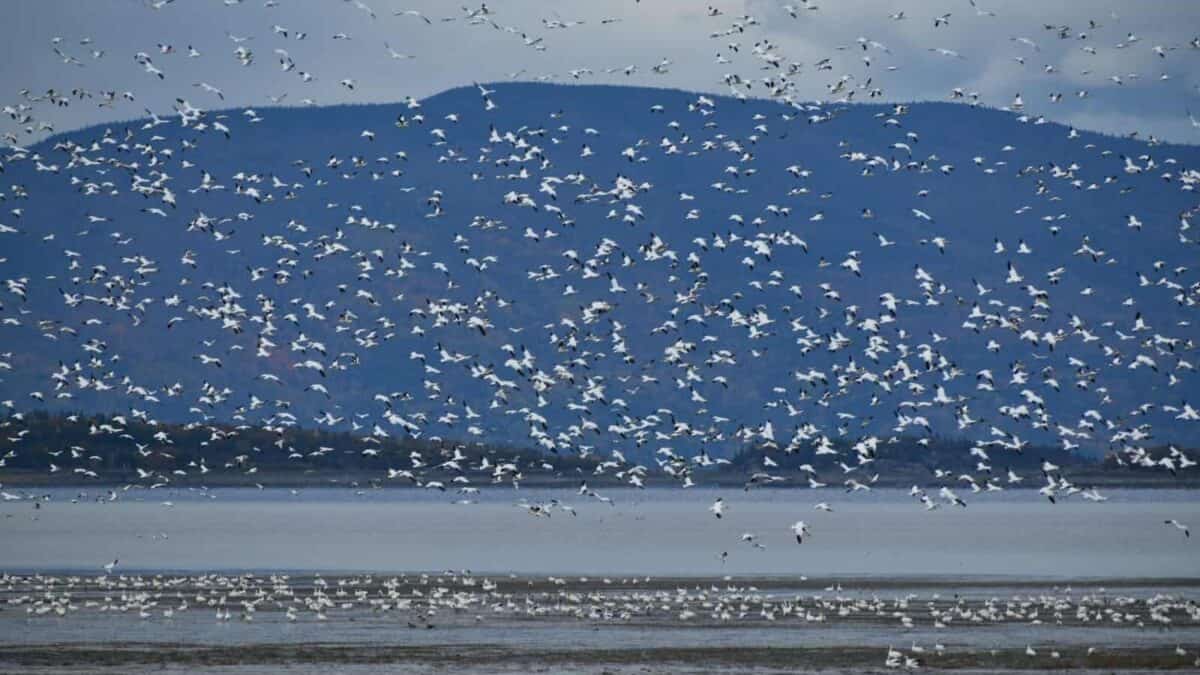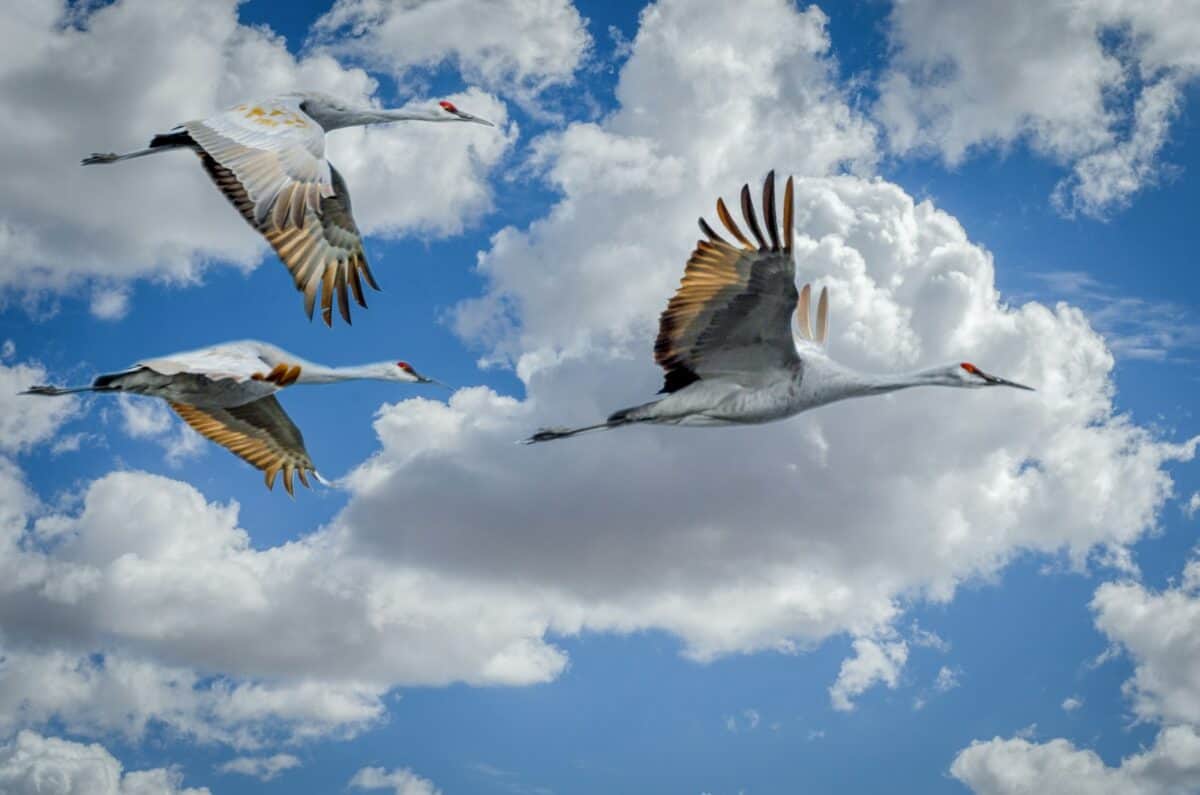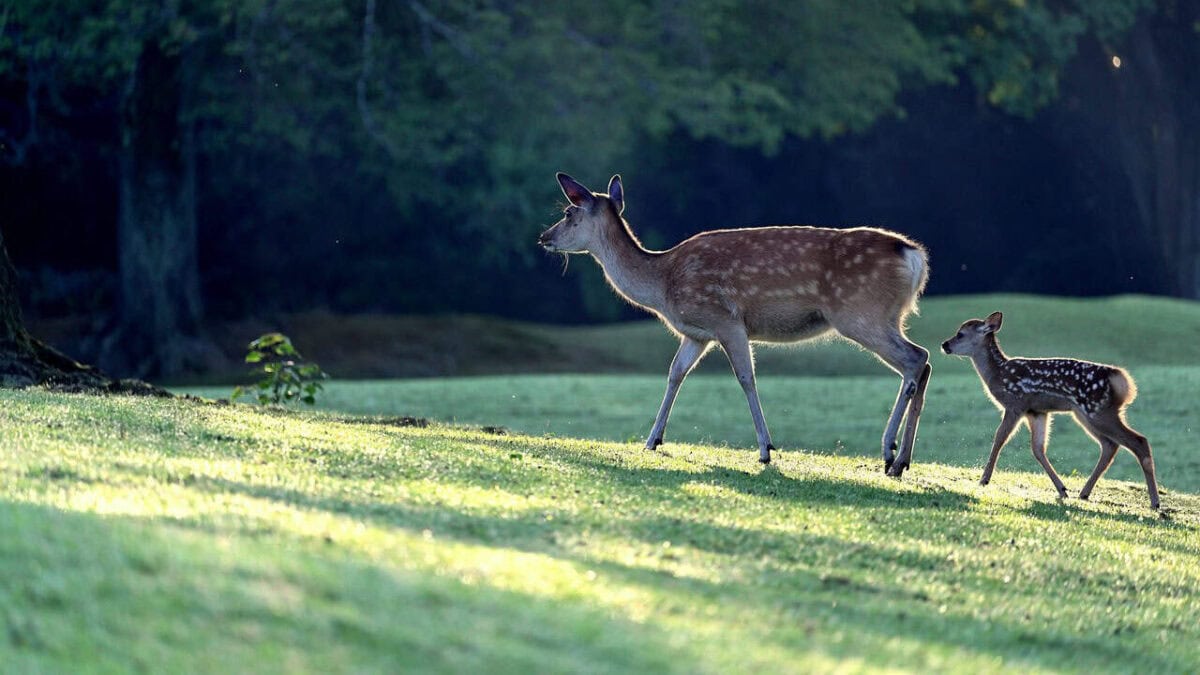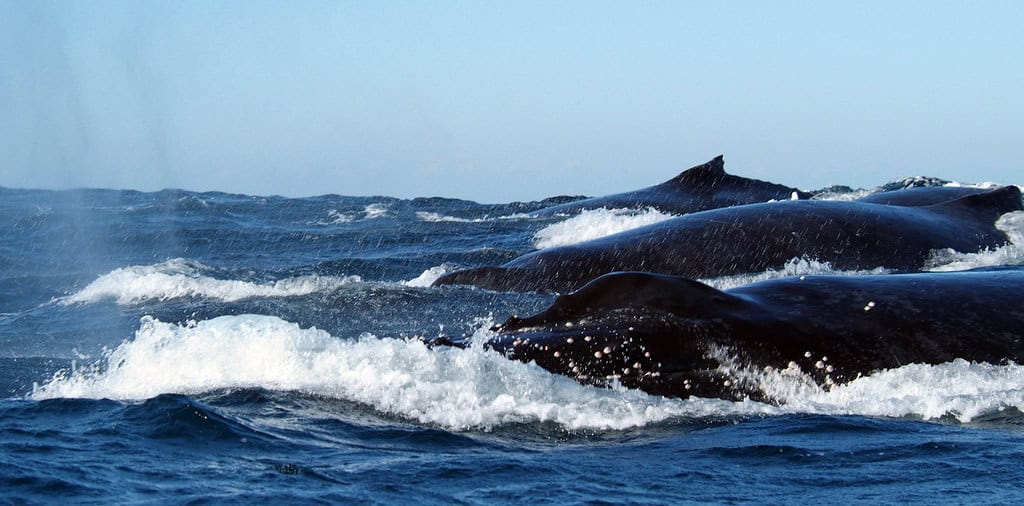Across the globe, a silent revolution is underway as wildlife responds to our changing climate. From the Arctic tundra to tropical rainforests, animal migrations—ancient journeys that have evolved over millennia—are transforming before our eyes. These shifts represent one of the most visible and widespread ecological responses to climate change, creating ripple effects throughout ecosystems worldwide. As temperature patterns shift, rainfall distributions change, and seasons become increasingly unpredictable, animals are being forced to adapt their migratory behaviors or face potential extinction. This comprehensive examination explores how climate change is reshaping animal migrations globally, the consequences for biodiversity and human communities, and what scientists are learning as they track these dramatic shifts across land, sea, and sky.
The Ancient Rhythm of Migration

Animal migration represents one of nature’s most remarkable phenomena—a cyclical movement of species across landscapes in response to seasonal changes, food availability, and breeding requirements. These journeys have been fine-tuned over evolutionary timescales, synchronized with environmental cues like day length, temperature patterns, and plant growth cycles. Some migrations span continents, like the 7,000-mile journey of Arctic terns from pole to pole, while others involve vertical movements up and down mountains or shifts between relatively close habitats.
For millions of years, these migrations have followed relatively predictable patterns, allowing species to exploit seasonal resources and avoid harsh conditions. They represent not just movement but carefully calibrated biological responses to environmental rhythms that have remained relatively stable throughout evolutionary history—until now.
Climate Change: A Game-Changer for Migratory Species

The accelerating pace of climate change has begun dismantling the environmental stability that migratory species depend upon. Global temperatures have increased by approximately 1.1°C since pre-industrial times, with warming occurring at different rates across regions. This seemingly small change has profound effects—altering the timing of seasons, shifting precipitation patterns, and increasing the frequency of extreme weather events.
For migratory animals, these changes disrupt the environmental cues that trigger their journeys and transform the habitats they depend on along their routes. The rate of current climate change is particularly problematic, occurring too rapidly for many species to adapt through evolutionary processes. As a result, we’re witnessing unprecedented shifts in migratory timing, routes, and even the complete abandonment of migration by some populations—changes that were once rare are now becoming commonplace across taxonomic groups.
Altered Timing: When Migration Schedules Break Down

One of the most documented impacts of climate change on animal migration is phenological shift—changes in the timing of seasonal behaviors. Across the Northern Hemisphere, spring migrations are occurring earlier as winter conditions retreat sooner. European migratory birds are arriving at breeding grounds an average of 8 days earlier than they did in the 1980s. Similarly, fall migrations are often delayed as warm conditions persist longer into traditional autumn months. These timing shifts create dangerous mismatches between animals and their environments.
Birds may arrive at breeding grounds before insects emerge to feed their young. Caribou may reach calving grounds before nutritious plants have sprouted. The ecological consequences of these mismatches can be severe—reducing reproductive success and population viability. Perhaps most concerning is that different species shift their timing at different rates, leading to disruptions in predator-prey relationships and other ecological interactions that have co-evolved over thousands of years.
Shifting Routes: Rewriting the Migratory Map

Beyond timing, climate change is literally redrawing the map of animal migrations. As temperature zones shift poleward and upward in elevation, many species are following, extending their migratory ranges into previously unsuitable territories. The European bee-eater, once rare in Central Europe, now regularly breeds as far north as Germany and Poland. Marine species show even more dramatic shifts—Atlantic mackerel have moved so far northward that they’ve sparked international fishing disputes as they’ve entered Icelandic and Faroese waters in unprecedented numbers.
Some migratory routes are lengthening as suitable habitats spread further apart, requiring animals to travel farther between seasonal destinations. Conversely, other migrations are shortening or disappearing entirely as year-round conditions become suitable in areas that once required seasonal movement. These geographic shifts bring migratory species into new ecological communities, creating novel interactions with unknown consequences for ecosystem stability and function.
When Migration Stops: The Rise of Resident Populations

Perhaps the most dramatic response to climate change is the complete abandonment of migration by some populations. As winters become milder in traditionally seasonal environments, the energetic costs and risks of migration sometimes outweigh the benefits. European blackcaps that once migrated from Germany to the Mediterranean now increasingly overwinter in British gardens, fed by bird feeders and protected by warmer urban temperatures.
Similar patterns are emerging in species ranging from white storks in Europe to American robins in North America. This shift from migratory to resident behavior has genetic implications, as resident individuals may begin breeding with each other rather than rejoining the broader migratory population. Over time, this can lead to genetic divergence and potentially even speciation events. The reduction in migratory behavior also has ripple effects through ecosystems, as formerly seasonal predators or seed dispersers become year-round residents, fundamentally altering food webs and plant-animal interactions.
Marine Migrations in Flux

Ocean environments face particularly acute climate impacts, with sea temperatures rising at alarming rates and marine heatwaves becoming more frequent and intense. These changes are dramatically affecting marine migratory species. Great whales are altering their feeding and breeding grounds, sometimes staying in polar feeding areas longer or shifting to entirely new regions. Sea turtles face multiple challenges—warming beaches skew the sex ratios of their hatchlings toward females, while changing ocean currents alter the distribution of their food sources.
Many commercially important fish species are moving poleward at rates of up to 70 kilometers per decade. These shifts have profound implications for marine ecosystems and the human communities that depend on them. Marine protected areas designed to shelter migratory species may become ineffective as animals move beyond their boundaries, while fishing communities find traditional catches disappearing and new species arriving—creating both economic challenges and potential conflicts over shifting resources.
Barrier Effects: When Climate Change Blocks Migration

For some migratory species, climate change doesn’t just shift routes but creates entirely new barriers to movement. Mountain-dwelling species that migrate vertically between elevations may find their pathways blocked as suitable climate conditions move upslope and eventually disappear from mountaintops—a phenomenon called “mountain-top extinction.” Droughts are intensifying and expanding in many regions, creating impassable zones for migratory species that require water sources along their routes.
African elephants, for instance, have been forced to alter traditional migration corridors as reliable water holes disappear during increasingly severe dry seasons. Marine migrations face similar challenges as oxygen-depleted “dead zones” expand in warming oceans, forcing species to navigate around these unsuitable areas. These barrier effects are particularly problematic because they can completely sever migratory connectivity, potentially isolating populations and reducing genetic diversity—a critical component of adaptive capacity in the face of environmental change.
The Cascade Effect: Ecological Consequences Beyond Migration

The reshaping of animal migrations reverberates throughout ecosystems in complex ways. Migratory animals serve as mobile links between distant habitats—transferring nutrients, dispersing seeds, controlling pest populations, and connecting food webs across vast distances. When these movements change, the ecological services they provide change as well. In the Arctic, earlier caribou migrations have reduced their role in nutrient cycling, affecting plant communities that depend on their presence at specific times.
Bird migrations influence insect populations across continents, and shifts in their timing can release agricultural pests from natural control. In marine environments, changes in whale migration affect nutrient cycling that supports phytoplankton blooms—the base of oceanic food webs. These cascade effects highlight how migration shifts can transform ecosystems far beyond the immediate impact on the migratory species themselves, often in ways that are difficult to predict and may take decades to fully manifest.
Winners and Losers: Adaptability in a Changing World

Not all migratory species are equally vulnerable to climate change impacts. Certain characteristics confer greater resilience, creating a landscape of ecological “winners” and “losers” as climate patterns shift. Species with high behavioral flexibility, shorter generation times, and greater genetic diversity generally adapt more successfully. Generalist species that can utilize varied habitats and food sources tend to fare better than specialists with narrow requirements. For example, many waterfowl species have shown remarkable adaptability, shifting migratory timing and routes while maintaining population stability.
In contrast, specialist long-distance migrants with rigid timing, such as the spoon-billed sandpiper that feeds on particular invertebrates available in very specific seasonal windows, face steep declines. The capacity for rapid learning also matters—species that can adjust behavior based on experience rather than fixed genetic programs show greater adaptive potential. These differences in adaptability mean that climate change is not just shifting migrations but reshaping the composition of ecological communities, potentially favoring more flexible, generalist species over specialized migrants.
Human Dimensions: Communities Adapting to New Migration Patterns

The transformation of animal migrations has profound implications for human communities, particularly those that depend on migratory species for livelihoods, food security, or cultural practices. Indigenous communities in the Arctic face challenges as the timing and routes of caribou migrations change, disrupting traditional hunting practices that have sustained them for generations. Coastal fishing communities worldwide must adapt as commercially valuable fish species shift their distributions northward, sometimes crossing international boundaries and triggering resource conflicts.
Tourism based on predictable animal migrations—from whale watching in Baja California to wildebeest viewing in East Africa—faces economic uncertainty as these events become less reliable or change location. Yet humans are also demonstrating adaptive capacity. Some communities are developing flexible management approaches, adjusting harvest seasons to match new migration timing or diversifying economic activities to reduce dependence on specific migratory species. These human adaptations represent an important but often overlooked dimension of the broader ecological response to changing migration patterns.
Tracking Change: New Technologies Reveal Migration Shifts

Our understanding of shifting migration patterns has been revolutionized by technological advances in wildlife tracking. Satellite transmitters weighing less than a gram now allow scientists to follow songbirds across continents, while acoustic monitoring networks record the movements of whales across ocean basins. Radar ornithology captures the mass movements of birds at continental scales, revealing broad patterns that would be impossible to detect through traditional observation. DNA analysis and stable isotope techniques help identify origins of migratory animals without physically tracking them.
These technologies have transformed migration science from anecdotal observations to precise, quantitative documentation of change. Large-scale citizen science initiatives like eBird harness millions of observations from volunteer birdwatchers, creating unprecedented datasets that reveal subtle shifts in migration timing and distribution. Combined with historical records stretching back centuries in some regions, these approaches allow scientists to document migration changes with extraordinary detail and precision, providing crucial evidence of climate impacts and informing conservation responses.
Conservation in a Moving Target World

The shifting nature of animal migrations presents profound challenges for conservation. Protected areas established to shelter migratory species become ineffective when animals no longer use them. International agreements designed around historical migration patterns may no longer align with biological reality. In response, conservation strategies are evolving toward more dynamic, forward-looking approaches. “Climate-smart” conservation networks aim to protect not just current habitat but areas that models predict will become suitable in the future.
Connectivity conservation focuses on maintaining and restoring movement corridors to allow species to track shifting climate zones. Some management approaches are becoming more interventionist—considering assisted migration for species that cannot move quickly enough on their own, or maintaining habitat through active management even as climate conditions change. The legal frameworks for conservation are also adapting, with some jurisdictions developing flexible protected area boundaries that can shift as species move. These innovations represent a fundamental rethinking of conservation philosophy—moving from preserving nature as it was to facilitating its adaptation to what is coming.
Looking Forward: Migration in a Warmer World

The future of animal migration in a changing climate depends significantly on how rapidly and extensively global temperatures rise. Even if international climate targets are met, substantial further changes to migratory patterns are inevitable given warming already locked into the climate system. If emissions continue on current trajectories, the transformation of animal migrations will likely accelerate and intensify. Climate models suggest that seasonal temperature and precipitation contrasts will change unevenly across the globe, potentially eliminating the environmental drivers of migration in some regions while intensifying them in others.
Many migratory species face a race against time—can they adapt quickly enough to keep pace with rapid environmental change? The answer varies by species and context, but evidence suggests that many traditional migrations will transform substantially or disappear entirely in coming decades. The world our grandchildren inherit will likely feature migration patterns remarkably different from those that have shaped ecosystems throughout human history, representing one of the most visible and widespread ecological reorganizations of the Anthropocene era.
Conclusion: Navigating an Uncertain Migratory Future

The reshaping of animal migrations represents a biological response to climate change that is simultaneously alarming and awe-inspiring—a global experiment unfolding in real time. These shifts reveal both the vulnerability and resilience of natural systems in the face of unprecedented environmental change. While some species demonstrate remarkable adaptability, others face existential threats as the environmental cues and conditions they’ve evolved with transform faster than they can respond.
For humanity, these changes carry profound implications, challenging our conservation paradigms and affecting communities that depend on predictable animal movements. As we navigate this uncertain future, our scientific understanding, technological capabilities, and management approaches must evolve as rapidly as the migrations themselves are changing. The transformation of animal migrations serves as both warning and inspiration—a vivid reminder of climate change’s ecological impacts and a testament to the dynamic adaptability of life on Earth.
- Kitsune: The Trickster Fox Spirits of Japan - August 23, 2025
- Where to Snorkel With Manta Rays and Colorful Reef Life - August 23, 2025
- Killer Whales Have Culture, Accents, and Ruthless Hunting Tactics - August 23, 2025

